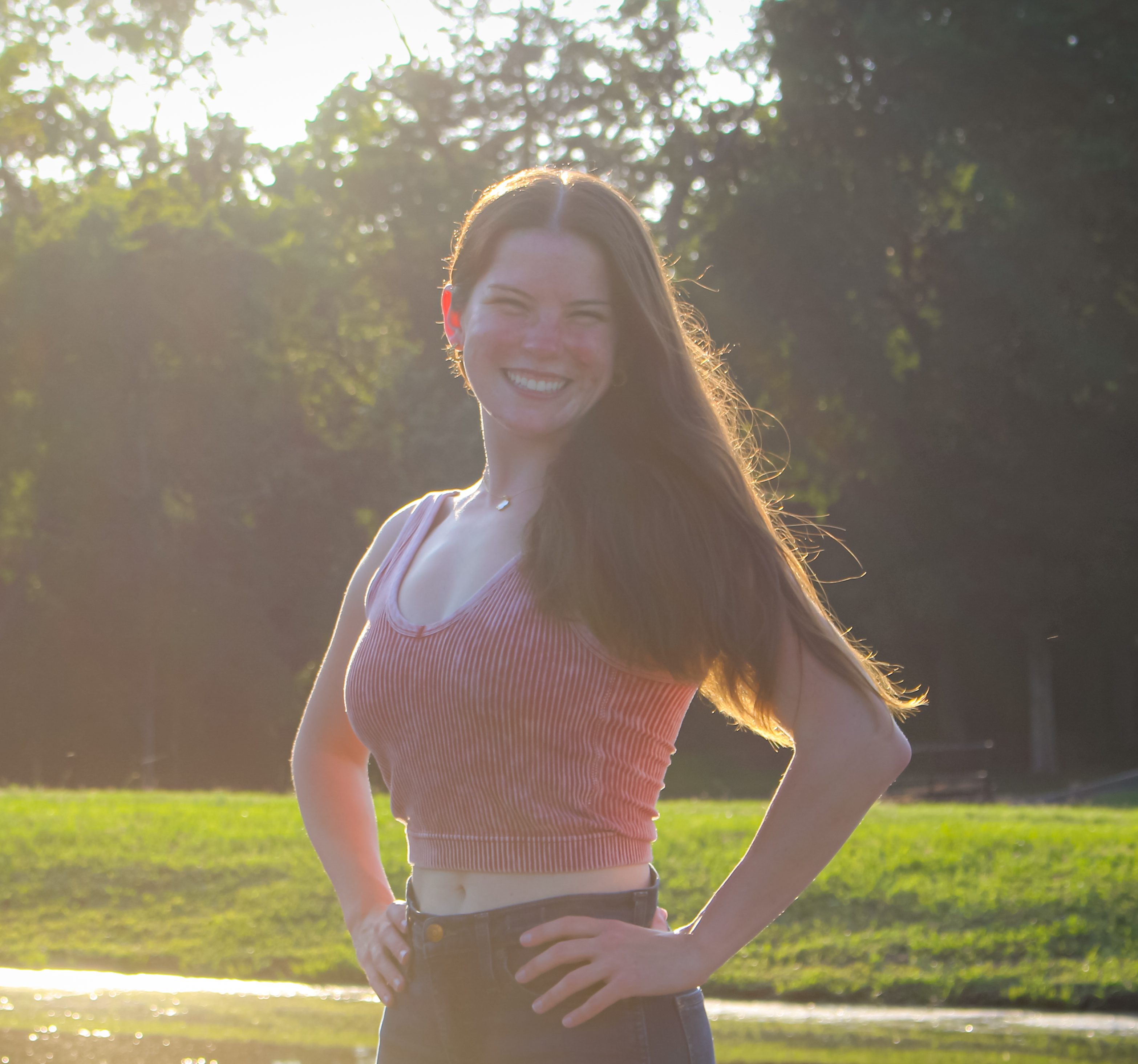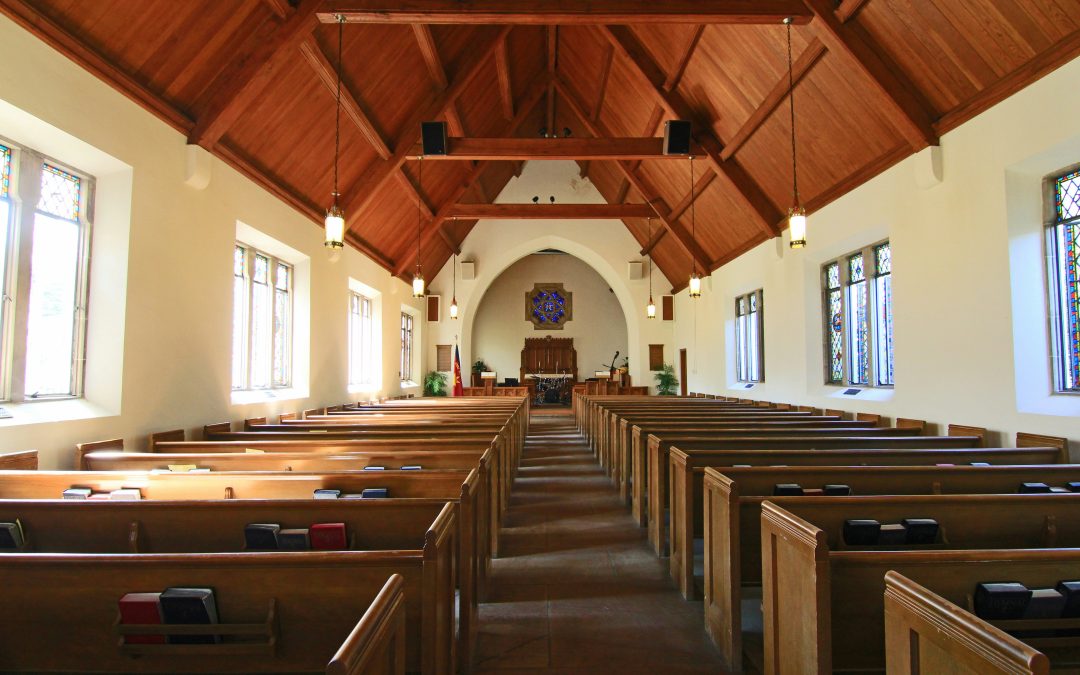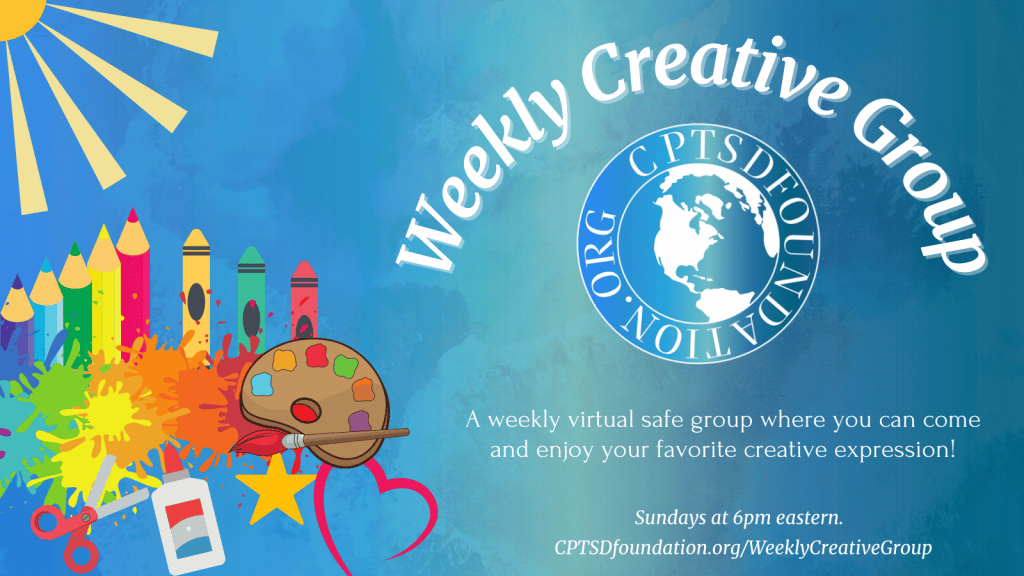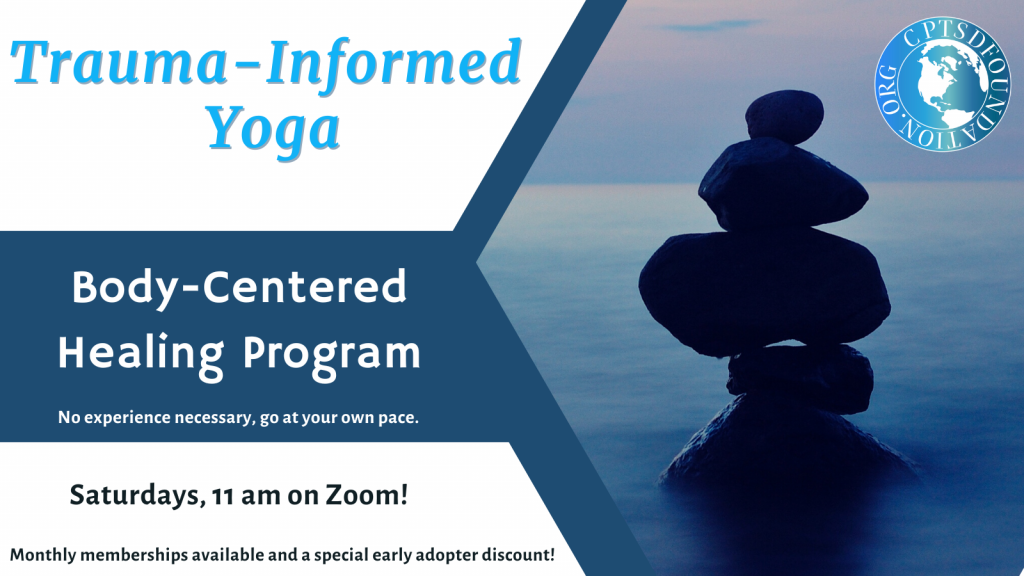Writer’s Note: This article discusses topics related to spiritual abuse. My purpose in sharing my story is not to single out any specific faith. While my negative experiences occurred within Christianity, it is important to recognize that religious abuse can happen in any belief system.
“You shouldn’t have done that, Natalie. That’s hypocrisy. And hypocrisy is the yeast of the Pharisees and teachers of the Law. Pretty soon, the Christians will be separated into the sheep and the goats. You don’t want to be a goat, do you?” Another member of the congregation admonished me, referencing the parable of Matthew 25:31-46.
I always knew I’d be a goat. I was never going to be good enough for God and make it into heaven.
Spiritual abuse at the hands of my eternal “family”
What “sin” had I committed? After years of suffering in silence, I finally stood up for myself against my church group leader, who made a habit of humiliating me in front of the congregation. I politely asked her to stop mistreating me, and that she and her superiors stop meddling in my private life, including their demands to oversee my medical decisions.
I knew that any church member who pushed back against the leaders faced strict discipline, accompanied by Bible verses thrown in their face as a reprimand, but I was at wit’s end. The congregation had exerted control over my life–dictating who I could talk to, what I could wear, who I could date, what I could read, and even my access to the Internet. But their demand that I surrender control over my medical care was intolerable. Once I set this boundary, I was shunned and excluded from participating in church activities.
Leaving religion
It’s been over two years since I’ve been involved in any religious communities or surrounded by the people I once considered my spiritual family. I grew tired of feeling insecure, inadequate, humiliated, uncomfortable, unworthy, and terrified around other Christians. Was it too much to ask that my “brothers and sisters in Christ” treat me better? After all, they had promised me that they loved me far more than my friends and family did and that we would spend eternity in heaven together once our physical bodies were united with the spirit and perfected in Christ.
The doctrine of eternal life gave me immense hope. It connected Bible verses in a way that promised that one day everyone—including those whose physical bodies had already died—would all live together in a beautiful heaven on earth with God.
Previously, I wrestled with the idea that this same loving God would send some people to hell. I didn’t want that to happen to anyone. My new understanding of the Book of Revelation was the hope I had been searching for. I longed to be in heaven with everyone I knew, in a world with no more death, mourning, crying, or pain. The church continued to reassure me that things would get better; it was just a slow healing process to cleanse the world of sin. In the meantime, I needed to work hard to help God by sacrificing my health, sleep, career, relationships, and sanity. I clung desperately to this hope as I continued to struggle with my anxiety, flashbacks, and suicidal thoughts, not understanding why I still wanted to die.
Eventually, I woke up to the fact that my pure heart had been manipulated. I was flabbergasted that I had ever believed these people truly loved me, preached the only correct doctrine, and had the right to control every aspect of my life. I needed to completely remove myself from the grasp of all religious communities I had been connected to. I packed my bags and trekked to a small town across the country to be closer to home.
I changed all my contact information to prevent congregants from harassing me. This may sound extreme, but it wasn’t. These people habitually showed up at members’ workplaces and homes, reminding them of the consequences of leaving. If members choose to abandon the flock, they were labeled betrayers, akin to the beast with seven heads and ten horns described in the Book of Revelation. Biblical plagues were wished upon them, and they were excluded from heaven. At this point, I was officially a “betrayer” in their eyes.
My “pagan” life
Losing my eternal hope—the very thing that kept me going—was a type of anguish I wouldn’t wish on anyone. I couldn’t believe in God anymore. I wish I could say that after escaping those people and starting a new life in a tiny town, it was just God and me. But it wasn’t. It was just me.
For the first two months of my pagan life, I genuinely thought I was going to burn in hell. My suicidal thoughts peaked, and I was bedridden in terror and guilt.
One frenzied night, I finally carried out my fantasy of destroying my Bible. I grabbed it, threw it on the floor repeatedly, stomped on it, ripped out its pages, and smeared leftover pizza grease all over it. I tossed every remnant of it into a bag and watched it fall down the trash chute of my apartment.
Picking up the pieces
I could write volumes about the effort I invested in going down Internet rabbit holes, listening to podcasts, and meeting with theologians to seek answers to my questions. However, it’s best to focus on the positivity that emerged from my despair, with the hope of encouraging other survivors that it is possible to restore their faith in a healthy and meaningful way–only if it feels right for them.
I still hold profound hope for meaning beyond my physical body. Throughout my healing journey, I have worked hard to let go of the false narratives others instilled in me about what my faith should look like. I define my faith on my terms. While I still have many unanswered questions, I am at peace with my faith. I accept that I don’t have all the answers, yet I can still hold onto hope for something greater than this life.
Practical ways I restored my faith during my healing journey
There was a time when I never thought I could utter or hear the word “God” again without experiencing a trauma response in my body. However, I have gradually reached a point where I can listen to discussions about religious topics and read faith-based literature. Here are some practical ways I’ve grown in my recovery:
#1: I prioritized my recovery from Complex PTSD and put my search for spiritual answers on pause
In the past, I wanted answers. And I wanted them now. I accepted that I could never find those answers while I was still grieving, dissociated, and going through intense medication withdrawal.
I took the time and space I needed to heal all aspects of myself. I mourned the years I lost while living under the control of others who falsely positioned themselves as religious authorities. Pausing my faith was not a sign of weakness or a lack of belief; it was a mature choice, with the understanding that rebuilding my life of peace, safety, and contentment must take precedence over everything else.
#2: I recognized that my religious trauma was not my fault and allowed myself to feel the emotions I had internalized for years
I now understand that I didn’t deserve the spiritual abuse I experienced. I no longer blame myself for failing to recognize it as abuse. I allowed myself to be angry about the unfairness of having to work through years of indoctrination that violated me, all to release emotions that weren’t truly mine. I processed these feelings in therapy, and as a result, I no longer have any emotional attachment to my religious experiences.
#3. I stopped pressuring myself to attend a physical church and looked within my heart
After leaving religion, the thought of stepping into a church again made my heart race. Embracing small-town life in its truest form, I began working with an equine therapist on her farm. Who would have thought that horses could calm the nervous system?!
My equine therapist kindly offered that, when I felt ready, I could join her at church, sitting in the back, and we could leave the minute I felt uncomfortable. I appreciated her gracious offer, but my pounding heart told me I still wasn’t ready.
Letting go of the pressure to find a new church community was incredibly liberating for me. I no longer believe that I need to be around others to grow in my faith. My faith is private and personal; it resides within me.
#4 I focus on a faith that promotes positivity, love, and non-judgment
Currently, I engage exclusively with faith-based topics that emphasize love, acceptance, and personal growth, rather than fire and brimstone. I read what aligns with my heart’s current state. I don’t pressure myself to delve into complex theological works that dredge up painful memories and stall my personal growth. I do not subscribe to any doctrines that lift one group of people above another.
#5 I set boundaries with those who use their religious beliefs to judge and criticize me
I only discuss faith with those who don’t pressure me to conform to their personal beliefs. I set boundaries with many people in my life who tend to correct, criticize, or analyze me through the lens of their own religious beliefs. I no longer consider religion to be a safe topic of conversation with them and prefer to focus on other subjects instead.
It is possible to recover
If my story inspires anyone wrestling with their recovery from spiritual abuse, I want to emphasize that it is possible to experience tremendous growth and healing—both within yourself and in your faith—beyond what you could have ever imagined, despite everything you’ve been through. I am truly sorry that you have been hurt by those you placed your trust in. Remember that you always had good intentions. It is possible to find peace as you separate yourself from the lies of what you endured under the guise of love, salvation, edification, sanctification, and charity. There are no requirements for the future. Your faith is on your terms.
Making my faith my own
My faith helped me navigate my struggles long before anyone else became involved. It was other people’s motives that corrupted my genuine desire for answers and community. I always set out with good intentions, extending my time, love, energy, money, possessions, and friendship without expecting anything in return.
Although my autonomy, voice, and strength were stolen from me in the past, I no longer carry any guilt or blame. Today, I am stronger than I have ever been. I no longer let the lies others try to plant in my mind about who I am affect my beliefs and my relationship with my faith. I will never again allow another person, group, or institution to extinguish the flame of my eternal hope.
“You can’t go back and change the beginning, but you can start where you are and change the ending.”
~ C.S. Lewis
Photo by Guilherme Stecanella on Unsplash: https://unsplash.com/photos/closeup-photography-of-woman-wearing-floral-skirt-holding-red-gas-lantern-at-brown-grass-field-smCn7Cbhk_c
To my readers who have been following my journey: I am excited to share that I have created a personal blog called “Little Cabin Life.” This blog chronicles my healing journey, where I share my experiences and the things I am doing to support my recovery. You’ll also find tips that have been helpful to me along the way. If you’re interested in following my story, please feel free to visit www.littlecabinlife.com.
Photo by Debby Hudson on Unsplash
Guest Post Disclaimer: Any and all information shared in this guest blog post is intended for educational and informational purposes only. Nothing in this blog post, nor any content on CPTSDfoundation.org, is a supplement for or supersedes the relationship and direction of your medical or mental health providers. Thoughts, ideas, or opinions expressed by the writer of this guest blog post do not necessarily reflect those of CPTSD Foundation. For more information, see our Privacy Policy and Full Disclaimer.

My name is Natalie, and I am a survivor of about 13 years of absolute psychological torture from Complex PTSD symptoms. For the longest time, I thought I was inherently sick and broken beyond repair. I spent over a decade running around in circles in the medical system trying to figure out what was “wrong” with me and how to “fix” it.
♡ What is Complex PTSD? ♡
Complex PTSD symptoms come from severe, prolonged, and numerous incidents of trauma, typically of a relational nature. Symptoms can come from any type of trauma, though, and the trauma doesn’t necessarily have to stem from childhood — adults can develop CPTSD as well. Trauma can damage the brain and shrink the hippocampus, causing many of the symptoms of CPTSD. I decided to go public with my story to be a voice for the voiceless. There are too many survivors being told CPTSD is a lifelong sentence, and they are not being given the tools they need to overcome their symptoms.
♡ My Story ♡
I endured multiple types of traumas starting at around age thirteen, including numerous situations of both individual and large-group interpersonal cruelty. Some of these situations forced me to switch environments. My body couldn’t fathom what was happening, and my nervous system shut down. I saw danger everywhere, operated in a panicked survival mode, and lived in fear, anxiety, and isolation. I did my best to appear “normal” on the outside, keep a smile on my face, and control what was happening on the inside, distracting myself with extreme workaholism and doing nice things for others. I took active steps to keep branching out in confidence again, but these traumas kept piling onto each other and overlapping. I wasn’t ready to give up yet, though, because I knew my family and friends would be distraught if I did. The most difficult and heartbreaking part of my story is that the two communities I set out to seek healing in—religion and the medical system itself—caused further trauma when some religious leaders, congregation members, and medical professionals chose to take advantage of my vulnerability for their own motives. In most of these situations, I didn’t even realize I was a victim until outsiders pointed it out for me and that my vulnerability made me a target of malicious people. Each future situation of being targeted was just salt on the wound of the original incident.
♡ My Struggles to Find Answers ♡
What I went through all those years was so severe, and my symptoms and physical body reactions as a result were so excruciating that I went as far as to see a neurologist, concerned that my symptoms were the result of some sort of nervous system disorder. However, he returned with no paperwork in his hands to inform me that there was nothing wrong with me but that I was simply completely traumatized, and my body reacted accordingly. I finally realized that my symptoms were not the result of an inherent mental or physical illness and began to take a trauma-based approach to my healing after many years of believing that I was “sick” for the rest of my life. My true progress began when I finally rejected the lies that were told to me that I would have to manage my symptoms for the rest of my life and made the decision to believe that I was fully capable of healing from my excruciating pain.
♡ Finding My Own Healing ♡
I am excited to share tips for natural, somatic, and holistic healing that have helped me overcome things like dissociation, flashbacks, sleep challenges, anxiety, hypervigilance, and more. I began to pursue unique methods of healing after many years of not seeing much progress through westernized care, and this was the catalyst for fast-tracking my healing. I aim to help survivors overcome their feelings of self-guilt, blame, and humiliation and help them realize that their bodies had normal reactions to abnormal situations.
I’m so glad I didn’t give up when my pain felt unbearable. I know what I’ve survived. I know the work I’ve put in to overcome it. I am finally living a life of consistent peace and contentment, and I am sharing my story from the other side. I hope to encourage other survivors that there was never anything wrong with them to begin with and that they are capable of living healthy, happy, and fulfilled lives. I aim to live my life in love of both others and myself, understanding that everyone has a story of their own. I am grateful to the CPTSD Foundation for giving me an opportunity to share my story.
♡ Personal Blog ♡
To learn more about my healing journey, please visit my personal blog, “Little Cabin Life,” at:
littlecabinlife.com




